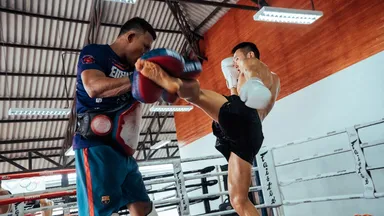
4 Steps to Creating a Teacher Training Program at Your Fitness Business
Last updated: June 23, 2025
You've conquered the hardest part: you've opened your Pilates or fitness studio and you're ready for more. Maybe you want a new income stream, access to a larger pool of qualified instructors, or to expand your offerings beyond private training or classes. If you're considering a teacher training or education program for your studio, follow these four steps to help you on your path.
Before we begin, let's talk about the benefits. Teacher training and other education programs can:
- Provide new income opportunities beyond private or group training.
- Give you immediate access to qualified instructors tailored to fit your brand.
- Create the perfect pipeline for loyal clients to take their practice to the next level, keeping them interested and challenged.
- Launch new opportunities for owners or staff to flex their mentorship skills, earn a better income, and stay inspired for the long haul.
You might agree that the benefits are hard to deny. One question remains: do you create your own, or do you buy a premade course?
If you've been shopping, you'll see your choices run the gamut. Some benefits of "plug and play" certifications include:
- No content creation on your part, saving you valuable time.
- Instant access to beautifully crafted manuals, online options, and traveling instructors who come equipped to teach the method.
- Partnering with trusted brand names may attract clients and talent to your studio.
Some drawbacks to consider:
- Extra fees may include a buy-in cost, a percentage of sales, or travel costs if you're hosting the program's trainers.
- These courses may be missing your flair, appeal, or unique perspective.
- Contractual limitations may include non-compete clauses, participation quotas, cancellation fees, or long-term licenses.
After weighing your options, are you ready to create something of your own? If you said yes, follow these four steps to start.
Step 1: Research your industry standards and regulations
The Pilates industry is unique because no governing body controls the standard of education needed to be a Pilates instructor. For a lot of reasons, that should likely change. In addition to being confusing and running the risk of being dangerous, it makes it hard for businesses to find the right instructors to fit their needs.
On the flip side, this lack of regulation presents a great opportunity for those who have something to say. You can be the creator of the change you want to see.
Other industries may require you to submit your education program to a committee, panel, or another regulatory mechanism before you can sell it. Do some research to find out what you're legally able to offer and what your industry standards require. You may be able to:
- Start a full certification course.
- Create a weekend workshop offering continuing education credits.
- Start a mentorship program and help certified trainers or clients dive deeper into their practice with your specialized insight.
Remember, you don't always have to go big or go home; find the passion you want to share, and you'll find the right avenue to share it.
Step 2: Be specific and strategic with the 5 Ws
Now that you know what type of program you can offer, imagine it and begin creating. Use the 5 Ws: who, what, when, where, and why and start now! Grab a pen and paper and answer the following questions. Be specific and visualize your product as you go.
- Who is your ideal student?
- What is your goal in creating this program? What will participants learn or earn if they take it?
- When does this program occur, or how long might participants spend on it?
- Where does the program take place? Is it at your studio, online, or somewhere else like at a retreat?
- Why might someone sign up for this program?
These first questions are crucial and help you define your program, outline your content, set pricing, and advertise your product.
Step 3: Organize your content, start creating today, and lead with your strengths
Organizing a worksheet, manual, or otherwise can be daunting. But remember, you know this subject matter well (it's likely your livelihood!), and you have something to say. Don't forget to keep it simple at the beginning.
- Start with an outline. Consider using a basic word processor such as google docs. You can spruce up your work with fancier tools later.
- Create headings or segments related to your 5 Ws (see Step 2 above). Examples include: Introduction to the Program; Exercise How-To; Common Errors; Modifications; How to Lead a Group Class; Props; etc.
- Generate unrestrained content. Fill your outline with what you know, and don't be critical of your work. Your goal is to get as much information on the page as possible; edit later.
- Save the extras. Your knowledge and experience are important, not necessarily your graphic design skills. Add pictures, videos, links, and more at a later date; don't be afraid to start with a simple template or worksheet for your first training.
Be creative about your shortcomings. We can't know everything, can we? Lead with what you know and refer out what you don't.
Step 4: Finally, get it out there!
Launch something (anything!) sooner than later, or you'll get stuck in the editing and self-doubt cycle. In time, you'll refine your program into the course of your dreams.
If your goal is to create a year-long teacher training course, start with weekend workshops. Generating your content bit-by-bit allows you to test each puzzle piece along the way. Keep what works, ditch what doesn't, and let your content evolve. After a while, you'll find you've generated lots of material in bite-sized, easy-to-create portions. Put the pieces together for a year-long program, break them apart for weekend workshops, and re-use your content for your social media, mentorships, and more.
Most importantly, have confidence in yourself, your work, and your unique voice in your industry. You deserve to gain the benefits of launching your own special program, and your future students will thank you for it.
Ready to invest in a teacher training program at your fitness studio? Mindbody Capital can help. Mindbody Capital provides pre-approved offers that help fitness businesses move their business forward.



